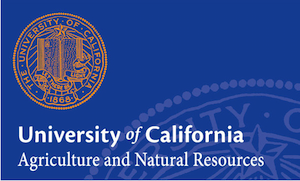UC Estimates Costs and Returns for Growing Garbanzo Beans
By Pam Kan-Rice, UCANR
The UC Agriculture and Natural Resources’ Agricultural Issues Center has released two new studies on the estimated costs and returns of producing garbanzo beans, also known as chick peas, in the Sacramento and San Joaquin valleys.
“Although acreage is relatively small, garbanzos are an important crop because California growers produce the large, cream-colored seed that’s used for the canning industry, often used for garnishes for salads,” said Rachael Long, a UC Cooperative Extension farm advisor serving Sacramento, Solano and Yolo counties.
The studies estimate the cost of producing garbanzo beans on 200 acres as part of a row crop rotation, using subsurface drip irrigation. A three-row bed tillage implement shallowly chisels, tills and reshapes the beds, avoiding disturbance of the buried drip tape left in place. Planting of seed treated for fungal and seedling diseases—Ascochyta rabiei, Rhizoctonia and Pythium—into residual soil moisture occurs in December. Seeding rates for the garbanzo beans are 85 pounds per acre.
Input and reviews were provided by UC ANR Cooperative Extension farm advisors and other agricultural associates. Assumptions were used to identify current costs for the garbanzo bean crop, material inputs, cash and non-cash overhead. A ranging analysis table shows profits over a range of prices and yields. Other tables show the monthly cash costs, the costs and returns per acre, hourly equipment costs, and the whole farm annual equipment, investment and business overhead costs.
“The importance of these studies right now is that they are currently being used to help secure USDA crop insurance for garbanzo production, expected in 2020,” Long said.
The new studies are titled: “Sample Costs to Produce Garbanzo Beans (Chick Peas), in the Sacramento and Northern San Joaquin Valleys – 2018” and “Sample Costs to Produce Garbanzo Beans (Chick Peas), in the Southern San Joaquin Valley – 2018.”
Both studies can be downloaded from the UC Davis Department of Agricultural and Resource Economics website at http://coststudies.ucdavis.edu
For additional information or an explanation of the calculations used in the studies, contact the Agricultural Issues Center at (530) 752-4651 or the local UCCE Farm Advisors; Sarah Light, selight@ucanr.edu, Rachael Long, rflong@ucanr.edu, Michelle Leinfelder-Miles, mmleinfeldermiles@ucanr.edu, or Nicholas E. Clark, neclark@ucanr.edu.












